Discover History of the Marine Corps
History of the Marine Corps

History of the Marine Corps
Author: Robert Estrada
Subscribed: 222Played: 10,068Subscribe
Share
© 2025 History of the Marine Corps Podcast. Unauthorized reproduction or distribution is prohibited.
Description
The first and only podcast that takes you deep inside Marine Corps history, exploring its battles, political decisions, and the strategic moves that shaped it from Tun Tavern to today.
Neither the United States Marine Corps nor any other component of the Department of Defense has approved, endorsed, or authorized this product (or promotion, or service, or activity).
Neither the United States Marine Corps nor any other component of the Department of Defense has approved, endorsed, or authorized this product (or promotion, or service, or activity).
182 Episodes
Reverse
This episode follows the Marines from the mud and caves of Okinawa into the strange, uneasy rehabilitation camps on Guam, Saipan, Motobu, and Hawaii, where exhausted divisions rebuilt, trained, and quietly braced for the largest amphibious operation in history—Operation Downfall. We break down how Marine divisions and air wings were wired into Operations OLYMPIC and CORONET, the internal fight in Washington over whether to starve, burn, or invade Japan, and how troops were reshaped for a direct assault on Kyushu and then the Tokyo Plain. Support the Show Listen ad-free and a week early on historyofthemarinecorps.supercast.com Donate directly at historyofthemarinecorps.com Try a free 30-day Audible trial at audibletrial.com/marinehistory Social Media Instagram - @historyofthemarines Facebook - @marinehistory Twitter - @marinehistory
This episode pulls together the long wars and the quiet missions that followed. It starts in Anbar and along the Syrian border, with Lioness teams at checkpoints, battalions fighting through al Qaim and Ramadi, and tribes turning against Al Qaeda. From there it tracks how Iraq shifted from brutal street fighting to fragile calm, only to see ISIS rise out of the same ground a few years later. The story widens to Afghanistan's hidden record in the Afghanistan Papers, then follows Marines into humanitarian work in Liberia, Haiti, the Indian Ocean, the Philippines, and Nepal, where ships become lifelines instead of launchpads. Libya, Benghazi, and the ISIS war show how quickly combat can return. The chapter closes on the future of the Corps, from Force Design debates to the simple ideas that have outlasted every reorganization. Support the Series Listen ad-free and a week early on historyofthemarinecorps.supercast.com Donate directly at historyofthemarinecorps.com Try a free 30-day Audible trial at audibletrial.com/marinehistory Social Media Instagram - @historyofthemarines Facebook - @marinehistory Twitter - @marinehistory
The surge years in Afghanistan sit at the center of this episode. We start in Marjah and Sangin, where canals, poppy fields, and mud walls turned into kill zones. The story follows the grinding losses of the 3rd Battalion 5th Marines and the slow shift from clearing ground to advising Afghan units. It ends at Kabul's airport in 2021, with Marines holding Abbey Gate as the war comes apart around them. From there, the chapter turns west, back to where this generation first learned to fight. The invasion of Iraq, the drive on Baghdad, An Nasiriyah's Ambush Alley, and the twin battles of Fallujah show Marines learning urban war along the Euphrates. Together, Helmand and Iraq become one story, a long arc of patrol bases, city fights, and withdrawals that never feel like closure. Support the Series Listen ad-free and a week early on historyofthemarinecorps.supercast.com Donate directly at historyofthemarinecorps.com Try a free 30-day Audible trial at audibletrial.com/marinehistory Social Media Instagram - @historyofthemarines Facebook - @marinehistory Twitter - @marinehistory
The Cold War ended, but crises kept coming. This episode opens in the Balkans, where Yugoslavia's breakup pulls Marines into a different mission. Offshore in the Adriatic, they fly strikes, launch rescues, and put infantry ashore as refugee camps, no-fly zones, and patrols blur the line between war and relief. From there, the story follows deployments to Haiti, Liberia, Sierra Leone, Albania, and East Timor, where Marines secure embassies, evacuate civilians, and support coalitions trying to hold together collapsing states. Then 9/11 hits, and the long war begins. Task Force 58 pushes hundreds of miles inland to seize Rhino and Kandahar, proving sea-based Marines can operate inside a landlocked country. The chapter ends in Helmand, in places like Garmsir, Now Zad, and the Ganjgal Valley, where patrol bases, IEDs, and hard lessons define a war with no clean finish. Support the Series Listen ad-free and a week early on historyofthemarinecorps.supercast.com Donate directly at historyofthemarinecorps.com Try a free 30-day Audible trial at audibletrial.com/marinehistory Social Media Instagram - @historyofthemarines Facebook - @marinehistory Twitter - @marinehistory
Vietnam ended, but its shadow did not. This episode opens with Project 100,000 and the Pentagon Papers, where promises of opportunity and careful strategy give way to lowered standards, hidden escalation, and young men sent to fight under false stories. From there, we follow the Marines into uneasy interventions. Beirut begins as a mission of presence and ends in the rubble of the 1983 barracks bombing. Grenada and Panama mix rescue, raids, and regime change on small pieces of ground where the politics are anything but simple. The story moves into the 1990s, when Marines become first in for a new kind of mission. Desert Shield and Desert Storm show how fast they can break a fortified army, while Somalia, Liberia, Haiti, and northern Iraq put them to work feeding the hungry and guarding refugees. Again and again, Washington speaks in the language of good intentions, and Marines live with the cost. Support the Series Listen ad-free and a week early on historyofthemarinecorps.supercast.com Donate directly at historyofthemarinecorps.com Try a free 30-day Audible trial at audibletrial.com/marinehistory Social Media Instagram - @historyofthemarines Facebook - @marinehistory Twitter - @marinehistory
Vietnam began as a distant commitment and became America's longest war. This episode follows the Marines into that storm, from early advisers helping build the Vietnamese Marine Corps to the landings at Da Nang and Chu Lai that drew the Corps into a grinding fight across I Corps. We move from rice paddies and coastal hamlets to high ridges and border valleys, through Starlite and Hastings, the DMZ outposts, the siege of Khe Sanh, and the house to house struggle for Hue. Along the way are names etched in Marine memory, from Con Thien and Dai Do to Dewey Canyon and Go Noi Island, where small units fought under constant fire while air and artillery tried to hold the line. The story ends with withdrawal and the last fights of the Easter Offensive and Mayaguez, then returns to a country that often met its Marines with silence. It is a broken war measured in ruined cities, political fallout, and the weight carried by those who fought it on both sides of the Pacific. Support the Series Listen ad-free and a week early on historyofthemarinecorps.supercast.com Donate directly at historyofthemarinecorps.com Try a free 30-day Audible trial at audibletrial.com/marinehistory Social Media Instagram - @historyofthemarines Facebook - @marinehistory Twitter - @marinehistory
From the streets of London to the beaches of North Africa, Marines carried their purpose into every corner of a world at war. They trained with the Royal Marines, guarded embassies under fire, planned Allied landings, and fought in places where no division would ever march. When Japan fell, they raised the flag over Yokosuka and Nagasaki, guarded surrendered fleets, and kept order through the uneasy calm that followed. Peace offered no rest. The Corps faced demobilization, doubt, and then a new kind of war in Korea's frozen mountains. At Pusan, Inchon, and Chosin, they proved the spirit of the Pacific had not dimmed. Support the Series Listen ad-free and a week early on historyofthemarinecorps.supercast.com Donate directly at historyofthemarinecorps.com Try a free 30-day Audible trial at audibletrial.com/marinehistory Social Media Instagram - @historyofthemarines Facebook - @marinehistory Twitter - @marinehistory
From the reefs of Tarawa to the cliffs of Okinawa, this chapter follows the Marines through the final and fiercest battles of the Pacific. It opens with the blood-soaked sands of Tarawa and the shattered airfields of Kwajalein, where new tactics and firepower reshaped amphibious war. Each island demanded more than the last, testing courage, endurance, and faith itself. By Okinawa, the Marines had mastered their craft but seen its cost beyond measure. Support the Series Listen ad-free and a week early on historyofthemarinecorps.supercast.com Donate directly at historyofthemarinecorps.com Try a free 30-day Audible trial at audibletrial.com/marinehistory Social Media Instagram - @historyofthemarines Facebook - @marinehistory Twitter - @marinehistory
From the calm of a Sunday morning in Hawaii to the sands of the South Pacific, this chapter marks the turning of the tide. It begins with the shock of Pearl Harbor and the desperate stands at Wake, Guam, and Corregidor, small garrisons that fought to the last shot. It follows the first lonely outpost in Iceland, where Marines waited through wind and ice while the world slipped into war, then turns to the islands of the Solomons, where the Corps learned to fight, bleed, and win in the jungles of the Pacific. Out of fire, hunger, and mud, a new kind of Marine emerged: amphibious, relentless, and ready for the long road to victory. Support the Series Listen ad-free and a week early on historyofthemarinecorps.supercast.com Donate directly at historyofthemarinecorps.com Try a free 30-day Audible trial at audibletrial.com/marinehistory Social Media Instagram - @historyofthemarines Facebook - @marinehistory Twitter - @marinehistory
From the ridges of Blanc Mont to the jungles of China, this chapter follows the Marines as they emerge from the Great War hardened and transformed. It opens on the blood-soaked hills of France, where the Corps shattered German lines at Blanc Mont and the Meuse, then traces their return to a nation eager for peace but uncertain of their purpose. In the decades between wars, the Marines rebuilt themselves on football fields, in classrooms, and on ponies at Peking. They forged doctrine, studied war, and turned lessons from Haiti and France into the blueprint for amphibious victory. By the eve of World War II, they had become a force unlike any in history and ready for the storm to come. Support the Series Listen ad-free and a week early on historyofthemarinecorps.supercast.com Donate directly at historyofthemarinecorps.com Try a free 30-day Audible trial at audibletrial.com/marinehistory Social Media Instagram - @historyofthemarines Facebook - @marinehistory Twitter - @marinehistory
From the jungles of the Caribbean to the wheatfields of France, this chapter traces the Marines' transformation from a small expeditionary force into a modern fighting corps. In the Dominican Republic and Haiti, they battled rebellion and unrest, forging legends in men like Smedley Butler, Dan Daly, and Herman Hanneken. Their story carries on through the siege and smoke of the Boxer Rebellion and into the trenches of the Great War, where the Marines proved their worth and defined what it means to wear the eagle, globe, and anchor. Support the Series Listen ad-free and a week early on historyofthemarinecorps.supercast.com Donate directly at historyofthemarinecorps.com Try a free 30-day Audible trial at audibletrial.com/marinehistory Social Media Instagram - @historyofthemarines Facebook - @marinehistory Twitter - @marinehistory
This episode traces the Marine Corps' transformation from the late 1800s into the modern force recognized today. It begins with the creation of Parris Island and the evolution of Marine training, from tents and marshland to a world-class recruit depot tested by war, tragedy, and reform. The story moves through Panama, where Marines became America's instrument of order, and into the age of steel ships and global ambition. It follows their battles in Cuba, the Philippines, and across Central America during the Banana Wars, where the Corps learned the lessons of small wars, air-ground coordination, and constabulary duty. Figures like Charles Heywood, John A. Lejeune, and Smedley Butler emerge as the architects of a professional, expeditionary force. By the time the last Marines left Nicaragua in 1933, the Corps had been reshaped, no longer a naval guard but a global instrument of American power, forged in hardship and defined by purpose. Support the Series Listen ad-free and a week early on historyofthemarinecorps.supercast.com Donate directly at historyofthemarinecorps.com Try a free 30-day Audible trial at audibletrial.com/marinehistory Social Media Instagram - @historyofthemarines Facebook - @marinehistory Twitter - @marinehistory
This episode follows the Marines from secret missions in Mexico to Civil War battlefields. We begin with Lieutenant Archibald Gillespie's covert journey that helped ignite the conquest of California and trace how that campaign laid the foundation for the Corps' presence on the Pacific coast and the birth of Camp Pendleton. From there, we turn inward as the nation collapses into civil war. The Marine Corps splits in two, with brother facing brother at sea and on land, from Bull Run to Charleston Harbor, from the ironclads at Hampton Roads to the final assault at Fort Fisher. Both the Union and Confederate Marines fight with the same discipline they once shared, even as their causes diverge. Support the Series Listen ad-free and a week early on historyofthemarinecorps.supercast.com Donate directly at historyofthemarinecorps.com Try a free 30-day Audible trial at audibletrial.com/marinehistory Social Media Instagram - @historyofthemarines Facebook - @marinehistory Twitter - @marinehistory
From the burning of Washington to the storming of Chapultepec, this episode follows the Marines through a generation of transformation and war. It opens with the War of 1812's final acts. From there, we moves through the Second Barbary War and Archibald Henderson's rise as the "Grand Old Man," who reshaped the Corps into a disciplined, permanent force. His Marines fought across swamps and frontiers in the Seminole campaigns before marching ashore in Mexico. The story ends at Veracruz and Chapultepec, where Marines scaled the fortress walls, earning the words forever carried in song. Support the Series Listen ad-free and a week early on historyofthemarinecorps.supercast.com Donate directly at historyofthemarinecorps.com Try a free 30-day Audible trial at audibletrial.com/marinehistory Social Media Instagram - @historyofthemarines Facebook - @marinehistory Twitter - @marinehistory
After the Revolution left America without a Navy or Marine Corps, global tensions forced the young republic to rebuild its strength at sea. This episode follows the Corps' revival in 1798 and its first tests in battle, from the Quasi-War with France to the campaign against the Barbary pirates and the daring raid to burn the captured frigate Philadelphia. It explores how Commandant William Ward Burrows shaped the Corps' discipline and structure, how the Marine Band became "The President's Own," and how Lieutenant Presley O'Bannon led the first Marines across the desert to Derne. We end with the start of the War of 1812, when Marines proved their courage from the decks of Old Ironsides to the shores of Canada, securing their place as a permanent part of the nation's defense. Support the Series Listen ad-free and a week early on historyofthemarinecorps.supercast.com Donate directly at historyofthemarinecorps.com Try a free 30-day Audible trial at audibletrial.com/marinehistory Social Media Instagram - @historyofthemarines Facebook - @marinehistory Twitter - @marinehistory
Born in a Philadelphia tavern at the height of the Revolution, the Marine Corps began as America's first seaborne fighting force. This episode traces that origin. Out of the smoke and uncertainty of rebellion, Samuel Nicholas gathered the first Marines from the city's streets. They were craftsmen, sailors, and laborers who became the sharp edge of a new nation. They launched their first assault in the Bahamas, fought beside Washington on the Delaware, and held fast through both triumph and disaster. From frozen rivers at Trenton to burning ships at Penobscot, Chapter 1 follows the Continental Marines. They were poorly equipped and often outnumbered, but they fought across every front of the Revolution and forged the traits that would define the Corps. Support the Series Listen ad-free and a week early on historyofthemarinecorps.supercast.com Donate directly at historyofthemarinecorps.com Try a free 30-day Audible trial at audibletrial.com/marinehistory Social Media Instagram - @historyofthemarines Facebook - @marinehistory Twitter - @marinehistory
This is a special 20-minute preview from our 250 Years of the Marine Corps series. In this opening chapter, a handful of men in Philadelphia answer a new call to arms and unknowingly found one of the most storied fighting forces in history. The preview covers the earliest days and how ordinary men began a legacy that still defines Marines today. Support the Series Listen ad-free and a week early on historyofthemarinecorps.supercast.com Donate directly at historyofthemarinecorps.com Try a free 30-day Audible trial at audibletrial.com/marinehistory Social Media Instagram - @historyofthemarines Facebook - @marinehistory Twitter - @marinehistory
In 1941, as the world plunged deeper into war, a small contingent of U.S. Marines found themselves far from the Pacific jungles, engaging in missions that would not capture headlines but were no less critical. Deployed far from the Pacific, they prepared the groundwork for larger Allied operations. In London, amidst the Blitz, they protected the American Embassy and took on tasks that extended far beyond their original mission. Across the Atlantic, in the rugged terrain of Scotland, Marines were pushed to their physical limits, learning unconventional warfare tactics from British Royal Marines, skills that would later define the elite Marine Raiders. Though often unsung, these Marines quietly helped lay the foundation for major victories to come. Their early, discreet efforts were crucial in shaping the success of later, larger campaigns and establishing the Marine Corps as a force capable of adapting to the ever-changing demands of global conflict. ************* Visit HistoryoftheMarineCorps.com to subscribe to our newsletter, explore episode notes and images, and see our references. Follow us on social media for updates and bonus content: Facebook and Twitter (@marinehistory) and Instagram (@historyofthemarines). Visit AudibleTrial.com/marinehistory for a free audiobook and a 30-day trial.
In the spring of 1945, the Battle of Okinawa became the bloodiest fight of the Pacific War. What was meant to be the final step toward Japan turned into a storm of mud, coral, and fire that tested every limit of courage and endurance. This episode follows the Marines through the final weeks of the campaign. It is a story of bravery and exhaustion, of shattered armies and civilians trapped between them, of generals who chose death over surrender, and of the staggering cost of victory. When the guns finally fell silent, more than two hundred thousand people were dead. The island lay in ruins, but amid that devastation came moments of humanity. ************* Visit HistoryoftheMarineCorps.com to subscribe to our newsletter, explore episode notes and images, and see our references. Follow us on social media for updates and bonus content: Facebook and Twitter (@marinehistory) and Instagram (@historyofthemarines). Visit AudibleTrial.com/marinehistory for a free audiobook and a 30-day trial.
By May 1945, Okinawa had become a war of exhaustion. The island's southern ridges, scarred by months of bombardment, hid Japan's last and strongest defensive line. When the Tenth Army resumed its drive on 11 May, the Marines faced terrain as deadly as any in the Pacific. To the east, the 1st Marine Division attacked into Wana Draw, a maze of ravines and caves leading toward Shuri Castle. A few miles west, the 6th Marine Division struck at Sugar Loaf Hill, a small rise commanding the road to Naha. For seven days, the two divisions clawed forward through mud, rain, and fire. By 18 May, both Wana and Sugar Loaf lay in Marine hands. The victory cracked the Shuri Line and forced the enemy's retreat. ************* Visit HistoryoftheMarineCorps.com to subscribe to our newsletter, explore episode notes and images, and see our references. Follow us on social media for updates and bonus content: Facebook and Twitter (@marinehistory) and Instagram (@historyofthemarines). Visit AudibleTrial.com/marinehistory for a free audiobook and a 30-day trial.






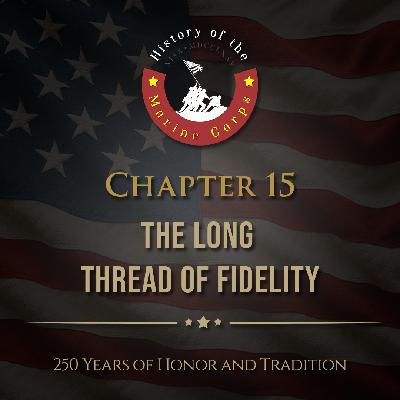
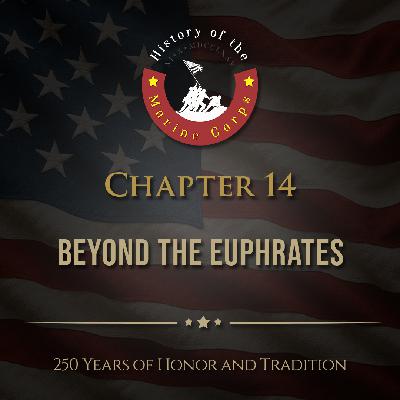



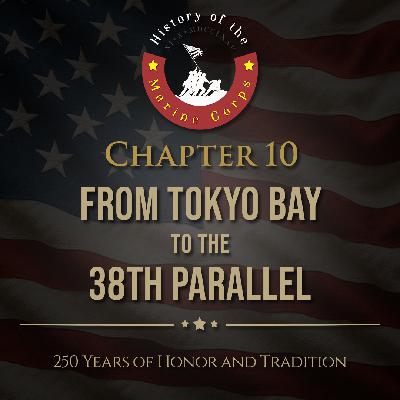
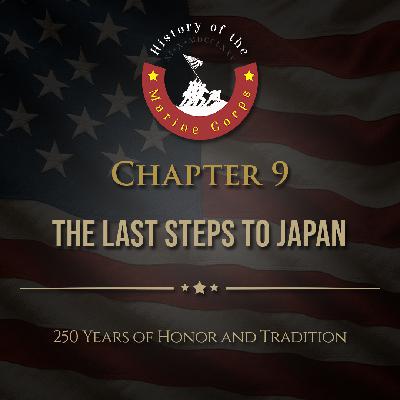
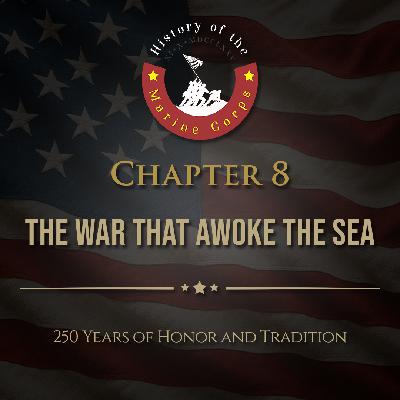
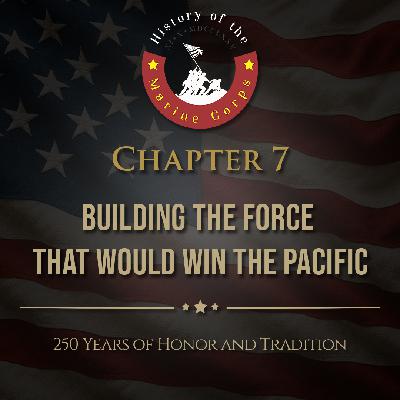
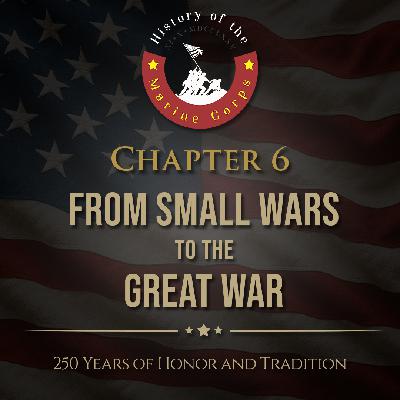
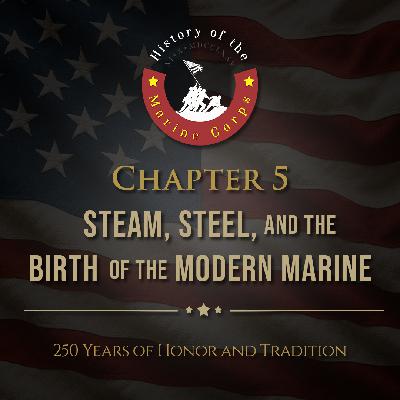
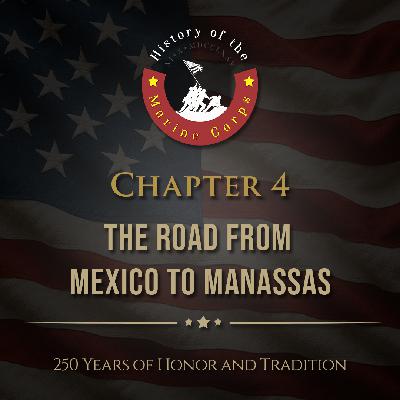
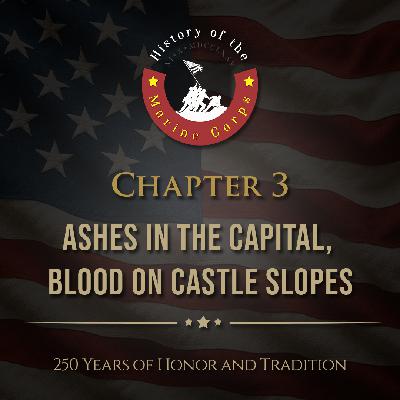

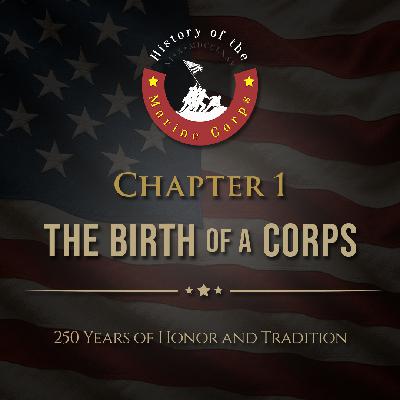







I love this podcast. The details are amazing and exceed anything we were taught in bootcamp. Keep them coming!